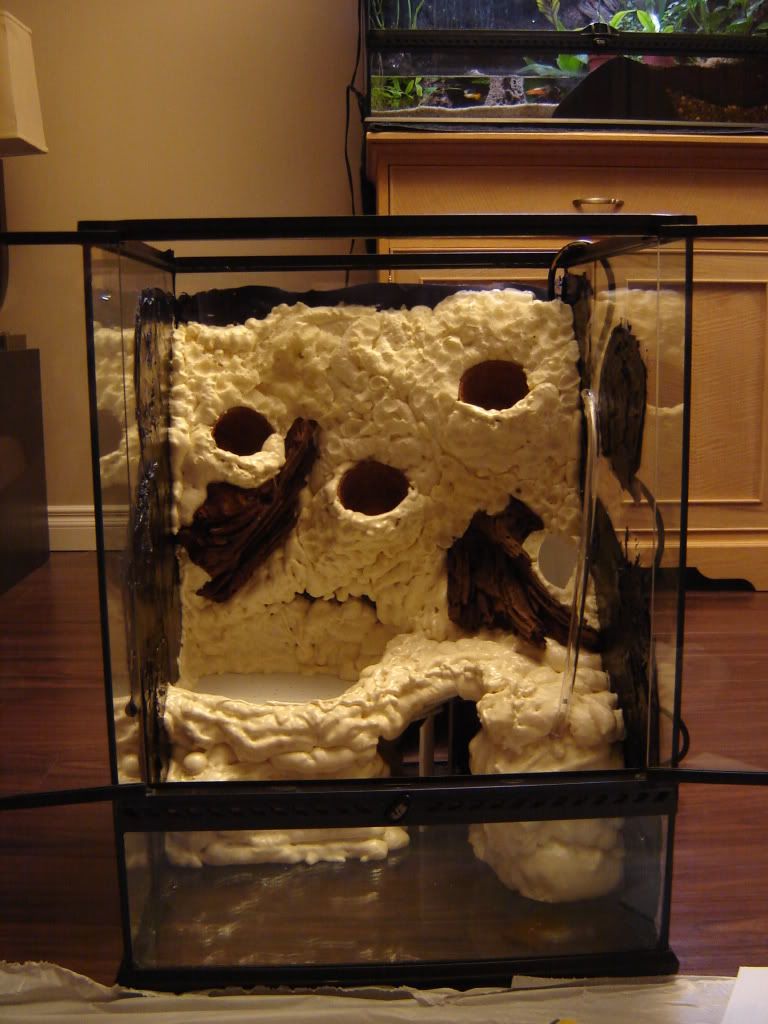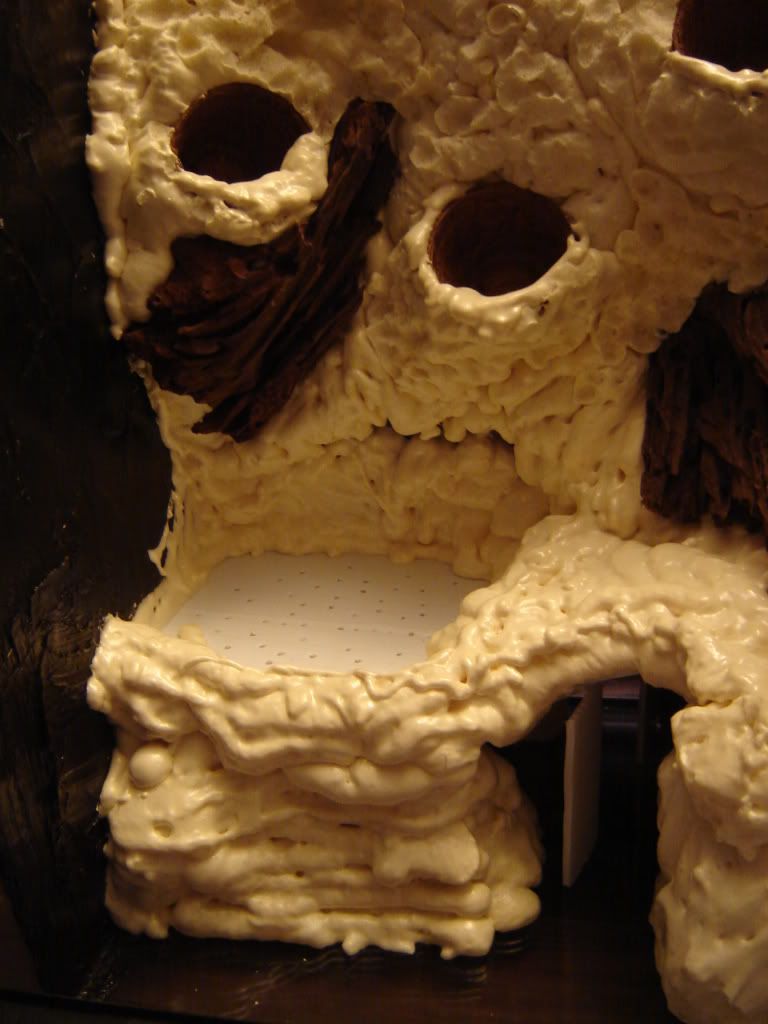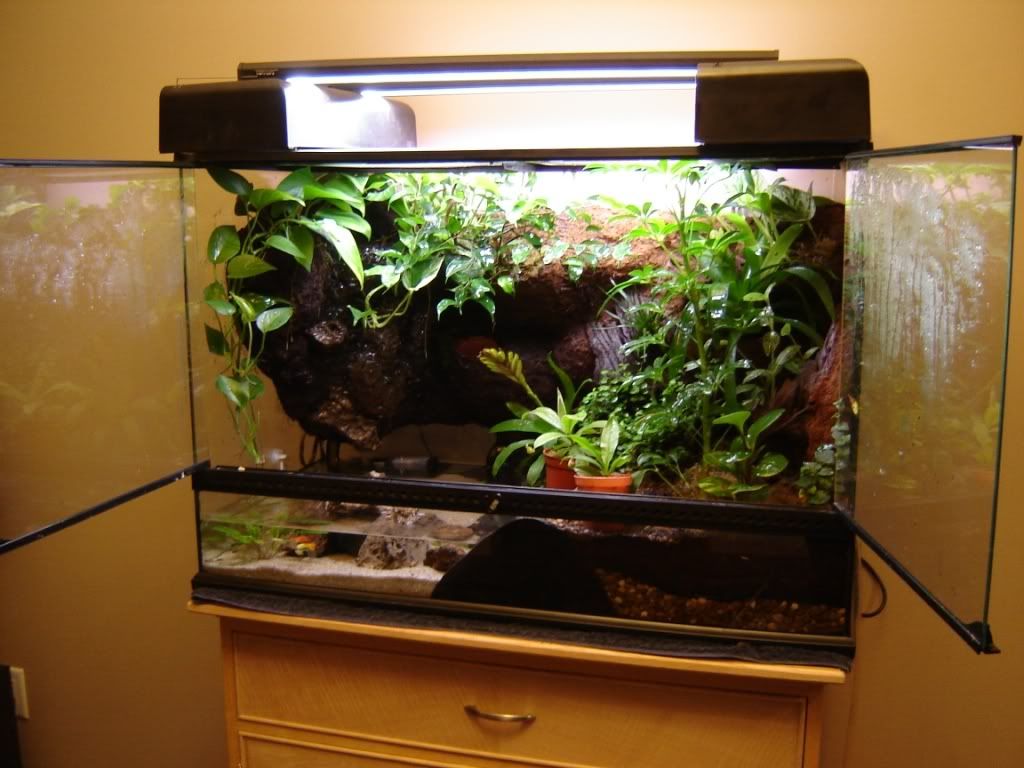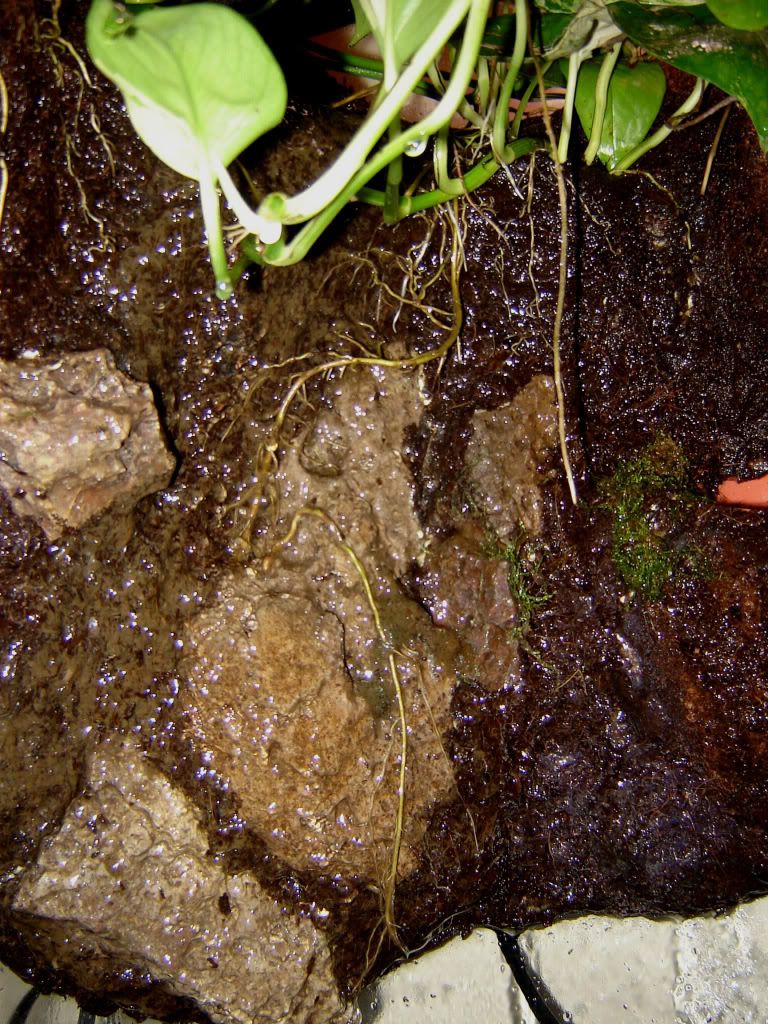Constructing the Display Case Crabitat!
Posted: Wed Mar 24, 2010 1:40 pm
UPDATE: THE Display Case Crabitat was completed on December 7, 2010! For photographs and more details on the finishing of the case please view the thread in the Pictures section.
viewtopic.php?t=78205
We're finally getting started on this thing!
The display case is probably from the 1950's. My hubby bought it at a local pharmacy when they closed and were having an auction for everything in the store. He bought it about 15 years ago for around $20. He was using it for his Matchbox Car collection before we moved in together.
It's glass, with plastic supports between the panels. The wood is veneered. It has four sliding glass doors in the back for access, and has pre-drilled holes for metal shelving supports. We have one glass shelf for it, the other broke some time ago. There may be a key somewhere to lock the doors as well, but we haven't found it yet.
The dimensions are smaller than what I was hoping. The interior dimensions are 20" deep, 48" long, and 40" high. That makes it about 166 gallons (629 liters, for the rest of the world. ).
).
I forgot to take a specific picture of it before we started, but it's in this picture that I took of the cats on the first day we had the windows open. (My mother loves when I send her kitty pictures at work. )
)

(Windows left to right - Mohawk, L.S. Skitter. Floor clockwise from Top - Charlie, Izzy, Franny, Tink)
The idea, after a lot of research into custom built vivariums, amphibian enclosures, and reptile tanks is this:
1. Knock out base of case.

(Lola - the crab obsessed cat)

(Even though it's closed up, the smallest cats can still get inside from the opening in the bottom. That's Tink.)
2. Screw in supporting boards in bottom of case creating a solid pit that can hold the weight of wet sand.
3. Seal all wood surfaces inside and out with three or four coats of water-based Spar Urethane. (Have to wait for 70 degree days.)
4. Glue heavy-duty 100% PEVA shower liner to bottom of case. Seal edge of plastic against glass with silicone.
5. Seal over all plastic supports inside case with silicone. Seal outside glass to wood with silicone.
6. Place in three inch high plexiglass strip at back of case to keep sand out of door tracks.
7. Coat metal shelf hangers in plasti-dip. When dry, silicone into place in tank.
8. Create custom screens for two of the door openings from black abs pipe and fiberglass screening.
9. Figure out a way to mount heat lamp from the inside front of tank. (I don't have a clue on this one! I just know I want it to shine toward the back of the tank, rather than out the front.)
10. Come up with ideas for a hanging moss pit and a solid floor shell shop (probably storage containers).
11. Make hammocks and other hanging places made from fishnet and using the shelf supports.
12. Use lots of wood from the lilac in the backyard. It's ancient and desperately needs the dead-wood cut out. I can flake the bark off, sterilize it, and it'll be nice and dry and have really intriguing shapes to it.
13. Add sand, fake plants, and cocohuts
14. Add the whole PP clan (there's 15 of them now!)
15. Disassemble the 15 gallon for parts and move all the teeny Es into the 29 gallon.
I'm hoping to spend about $50 for the structural aspects of the tank. The decoration will come later and in smaller stages. (A plastic plant this pay, a neat hidey-hole next pay.)
I'm getting so antsy about getting this done! Almost everything is weather dependent. Hurry up and get here warm weather!!!!!
viewtopic.php?t=78205
We're finally getting started on this thing!
The display case is probably from the 1950's. My hubby bought it at a local pharmacy when they closed and were having an auction for everything in the store. He bought it about 15 years ago for around $20. He was using it for his Matchbox Car collection before we moved in together.
It's glass, with plastic supports between the panels. The wood is veneered. It has four sliding glass doors in the back for access, and has pre-drilled holes for metal shelving supports. We have one glass shelf for it, the other broke some time ago. There may be a key somewhere to lock the doors as well, but we haven't found it yet.
The dimensions are smaller than what I was hoping. The interior dimensions are 20" deep, 48" long, and 40" high. That makes it about 166 gallons (629 liters, for the rest of the world.
I forgot to take a specific picture of it before we started, but it's in this picture that I took of the cats on the first day we had the windows open. (My mother loves when I send her kitty pictures at work.

(Windows left to right - Mohawk, L.S. Skitter. Floor clockwise from Top - Charlie, Izzy, Franny, Tink)
The idea, after a lot of research into custom built vivariums, amphibian enclosures, and reptile tanks is this:
1. Knock out base of case.

(Lola - the crab obsessed cat)

(Even though it's closed up, the smallest cats can still get inside from the opening in the bottom. That's Tink.)
2. Screw in supporting boards in bottom of case creating a solid pit that can hold the weight of wet sand.
3. Seal all wood surfaces inside and out with three or four coats of water-based Spar Urethane. (Have to wait for 70 degree days.)
4. Glue heavy-duty 100% PEVA shower liner to bottom of case. Seal edge of plastic against glass with silicone.
5. Seal over all plastic supports inside case with silicone. Seal outside glass to wood with silicone.
6. Place in three inch high plexiglass strip at back of case to keep sand out of door tracks.
7. Coat metal shelf hangers in plasti-dip. When dry, silicone into place in tank.
8. Create custom screens for two of the door openings from black abs pipe and fiberglass screening.
9. Figure out a way to mount heat lamp from the inside front of tank. (I don't have a clue on this one! I just know I want it to shine toward the back of the tank, rather than out the front.)
10. Come up with ideas for a hanging moss pit and a solid floor shell shop (probably storage containers).
11. Make hammocks and other hanging places made from fishnet and using the shelf supports.
12. Use lots of wood from the lilac in the backyard. It's ancient and desperately needs the dead-wood cut out. I can flake the bark off, sterilize it, and it'll be nice and dry and have really intriguing shapes to it.
13. Add sand, fake plants, and cocohuts
14. Add the whole PP clan (there's 15 of them now!)
15. Disassemble the 15 gallon for parts and move all the teeny Es into the 29 gallon.
I'm hoping to spend about $50 for the structural aspects of the tank. The decoration will come later and in smaller stages. (A plastic plant this pay, a neat hidey-hole next pay.)
I'm getting so antsy about getting this done! Almost everything is weather dependent. Hurry up and get here warm weather!!!!!





